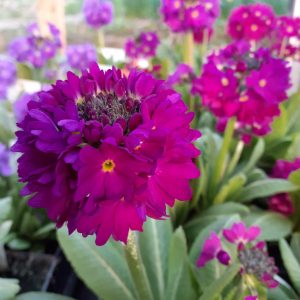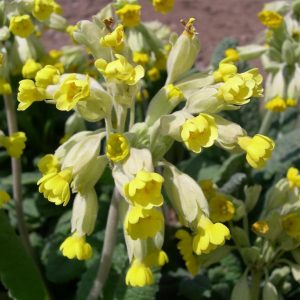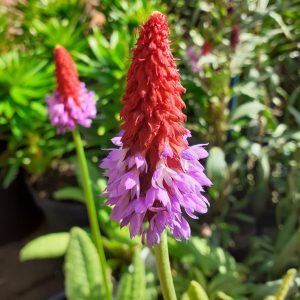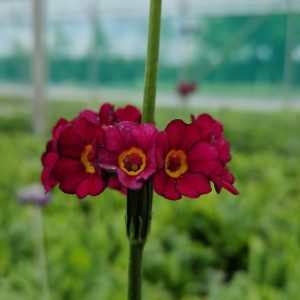Primulas, commonly known as primroses, are charming and diverse plants that can add vibrant colours to your garden. Follow these planting guidelines to ensure the successful establishment and thriving growth of your Primula plants:
Choose the Right Location
Sunlight: Primulas generally prefer partial shade to full shade. Some varieties can tolerate morning sun but should be protected from intense afternoon sun.
Soil: Plant in well-draining soil rich in organic matter. Primulas thrive in slightly acidic to neutral soil.
Planting Time
Spring or Autumn: Primulas are best planted in early spring or autumn when the weather is cool. This allows them to establish roots before the heat of summer or the cold of winter.
Planting Depth
Shallow Planting: Dig a hole just deep enough to accommodate the root ball. Avoid planting too deep, as Primulas prefer their crowns to be slightly above the soil surface.
Watering
Consistent Moisture: Keep the soil consistently moist, especially during the growing season. Water thoroughly when the top inch of soil feels dry.
Mulching
Mulch Application: Apply a layer of organic mulch around the plants to conserve moisture, suppress weeds, and regulate soil temperature.
Fertilisation
Moderate Feeding: Primulas don’t require heavy feeding. Apply a balanced, slow-release fertiliser in early spring to promote healthy growth.
Spacing
Proper Spacing: Plant Primulas according to the recommended spacing for the specific variety you have. Adequate spacing promotes good air circulation and helps prevent diseases.
Pruning
Deadheading: Remove spent flowers regularly to encourage continuous blooming. Trim back spent foliage in late autumn or early spring.
Winter Care
Protect from Frost: In regions with harsh winters, provide a layer of mulch around the plants to protect them from frost.
Pests and Diseases
Vigilant Monitoring: Keep an eye out for pests like aphids and slugs, as well as diseases like powdery mildew. Treat promptly with environmentally friendly solutions if detected.
Division
Periodic Division: Primulas benefit from division every 2-3 years to maintain vigour. Divide in early spring or after flowering.
Adapt to Varietal Needs
Varietal Requirements: Different Primula varieties may have specific care needs. Consult variety-specific guidelines for optimal care practices.
Container Planting
Well-Draining Containers: If planting in containers, ensure they have drainage holes. Use a high-quality potting mix and water when the top inch of soil feels dry.
Adjustments for Climate
Climate Considerations: Be mindful of your local climate. Primulas may need additional protection during heatwaves or unseasonably cold periods.
Enjoy Blooms
Appreciate the Beauty: Sit back, relax, and enjoy the delightful blooms that Primulas bring to your garden. These versatile plants offer a spectrum of colours and charming flowers.
By following these planting guidelines, you’ll set the stage for healthy and vibrant Primula plants that contribute to the beauty of your garden.











